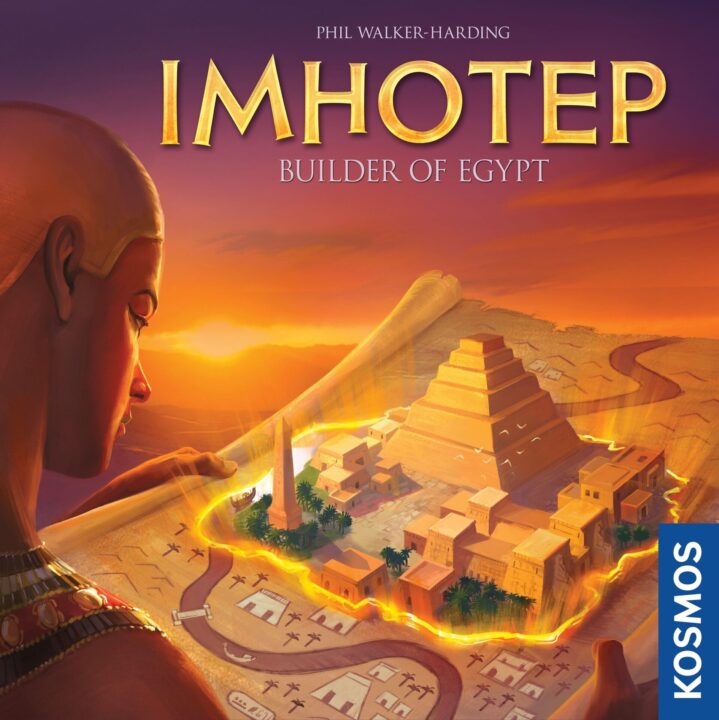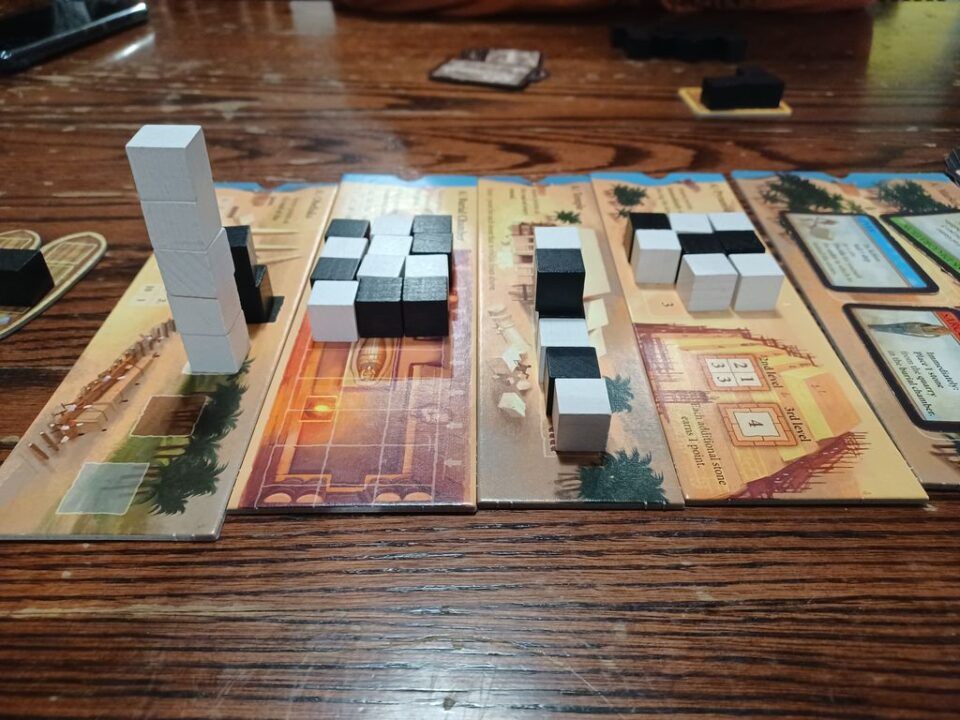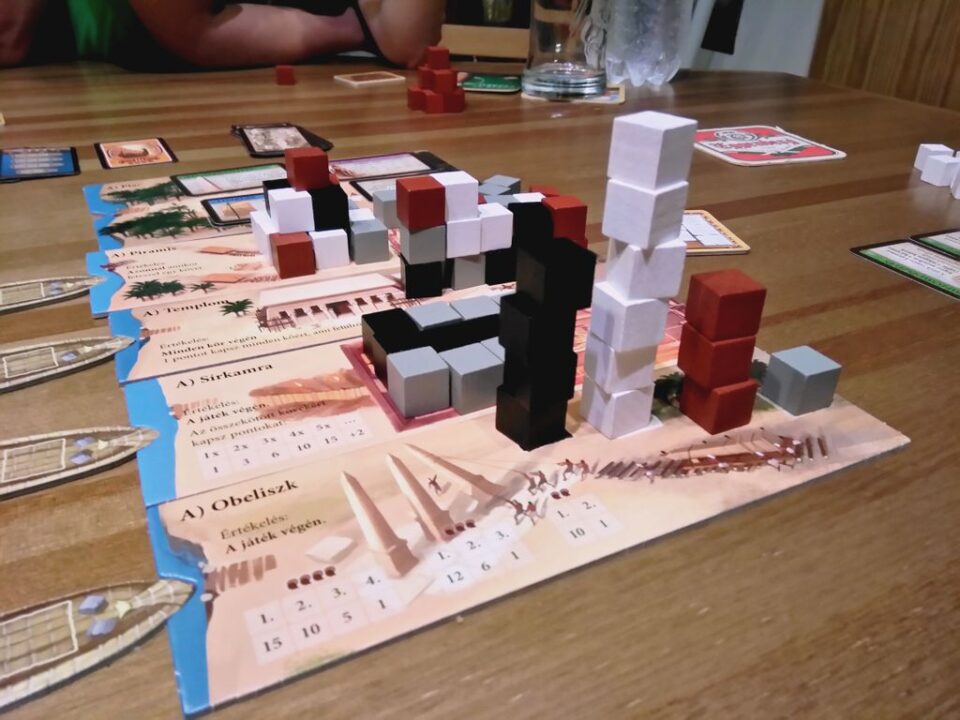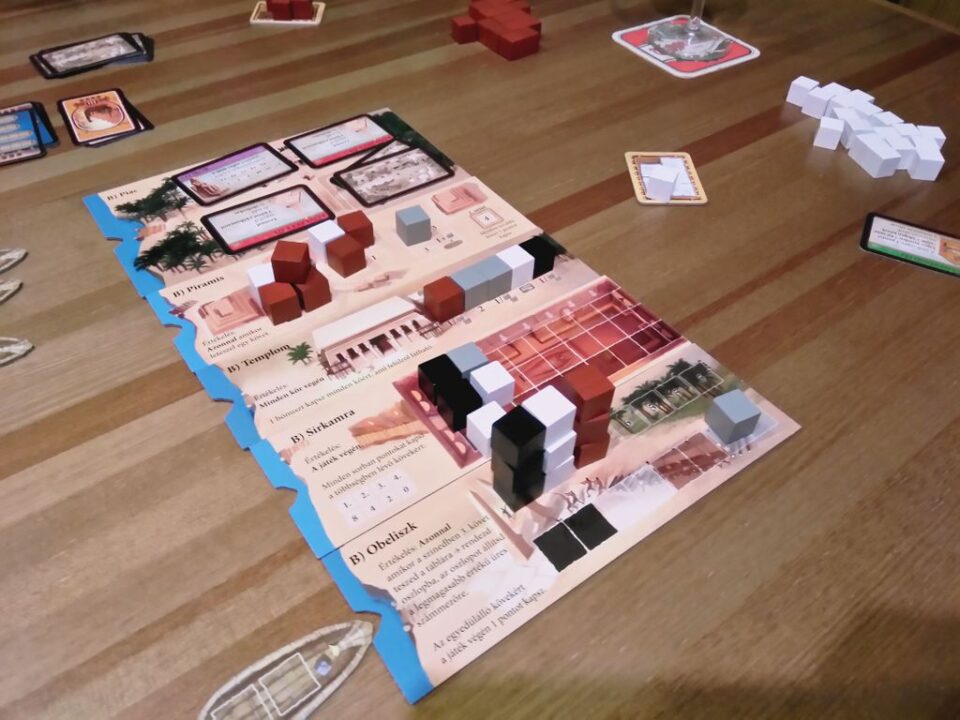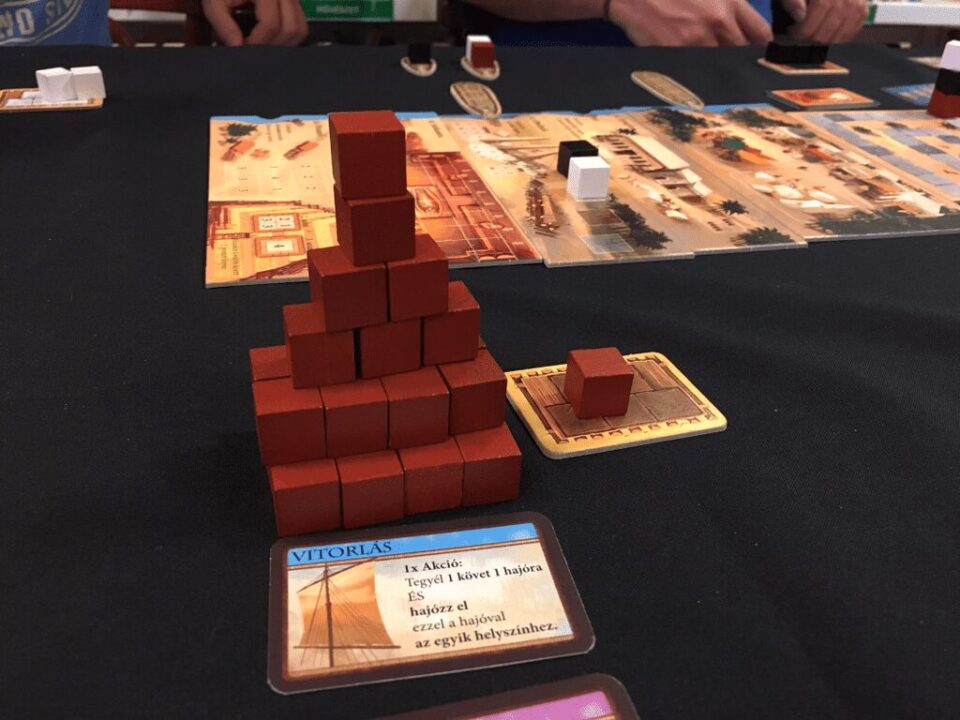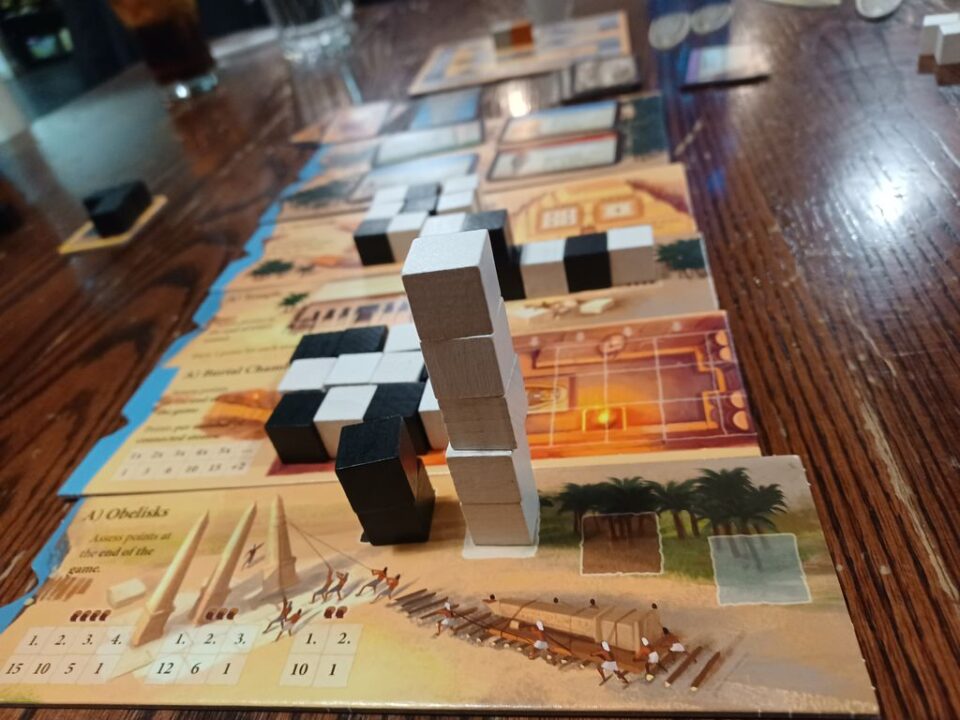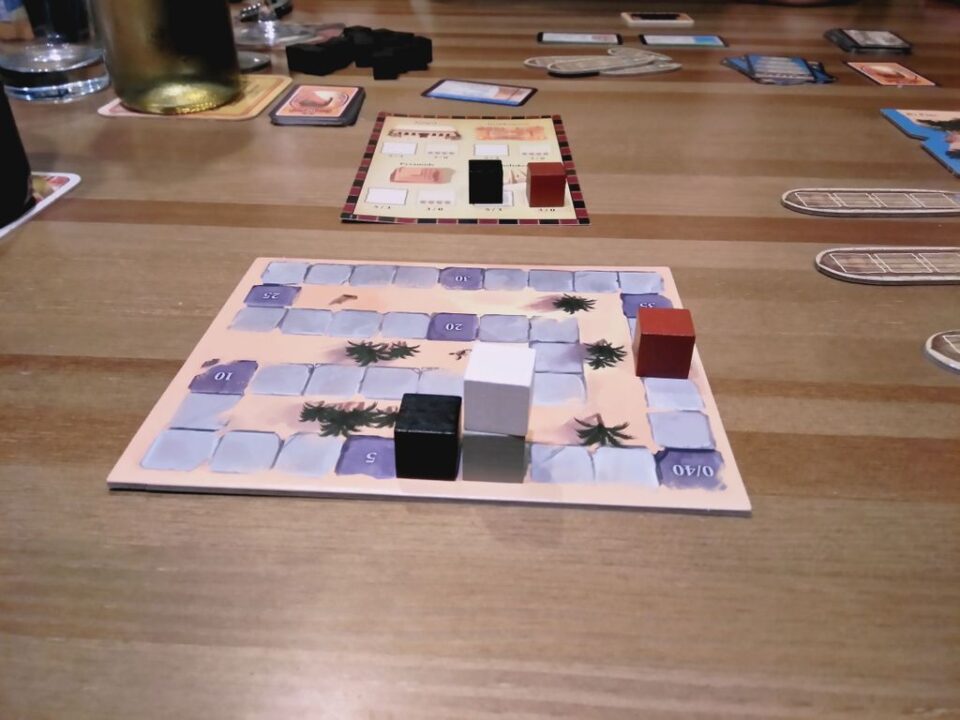Overview
Welcome to this review of Imhotep, where ancient Egypt is not just a theme but a battleground of wits and strategy. As an architect, you’ll be swept into a world requiring sharp resource management, cunning player interactions, and the rush of quick decision-making—all of which are underpinned by a surprisingly straightforward setup. Let’s delve into how these elements come together to either construct monuments to your glory or see them relegated as sand-swept relics of what could have been.
How It Plays
Setting Up
In Imhotep, setup is a breeze. Start by placing the market, scoring, and supply boards in the centre of the table, and then shuffle the market cards and lay out four to form the market display. Each player gets a sled board to store stones and selects a color to gain their ship tokens. Stones of each color are piled beside the supply sled, and voilà, you’re ready to build some Egyptian structures!
Gameplay
Players take turns to either collect stones, place a stone on a ship, sail a ship to a location, or play a blue market card. The actions are quick and set up fascinating strategic choices as you try to predict and manipulate your opponents’ moves, whilst also advancing towards building your ancient Egyptian monuments.
Winning the Game
The judicious use of cubes in pyramids, temples, burial chambers and obelisks scores points instantly or at the end of the game. After six rounds, scores from these structures and gathered cards determine the master builder and winner of Imhotep. Clear strategy and a hint of adaptability pave the arrival to victory. True fun’s measure is seeing that strategic planning in motion!
Want to know more? Read our extensive strategy guide for Imhotep.
Mastering the Stone Stockpile
The ebb and flow of resource management can truly make or break a civilization, much like it does in board games. In Imhotep, vying for the right stones reminds me of this precept every playthrough. I recall one session where I hoarded limestone, a nod to history’s majestic pyramidal feats. It was not mere remembrance of architectural glory but strategy in its purest form.
Hoarding for the Win
Stashing away just enough for the right moment proved to be decisive. I kindled the knack to predict opponents’ moves; a furtive glance, a slight hesitance, all clues in our vibrant tableau of deceptive calm. My thriving docks served me a winning hand.
Timing is Key
Unloading cargo with shrewd calculation under the guise of casual play, like a serpent poised in tall grass—always thrilling. In essence, proper stockpiling and timing are key to making your mark in the annals of Imhotep Review. This ongoing resource-ridden tussle defines the essence of gameplay itself.
Inset with nimble thought and strategic reserve, our transition into the nuances of player interaction dynamics is heralded from the same game’s lively shores.
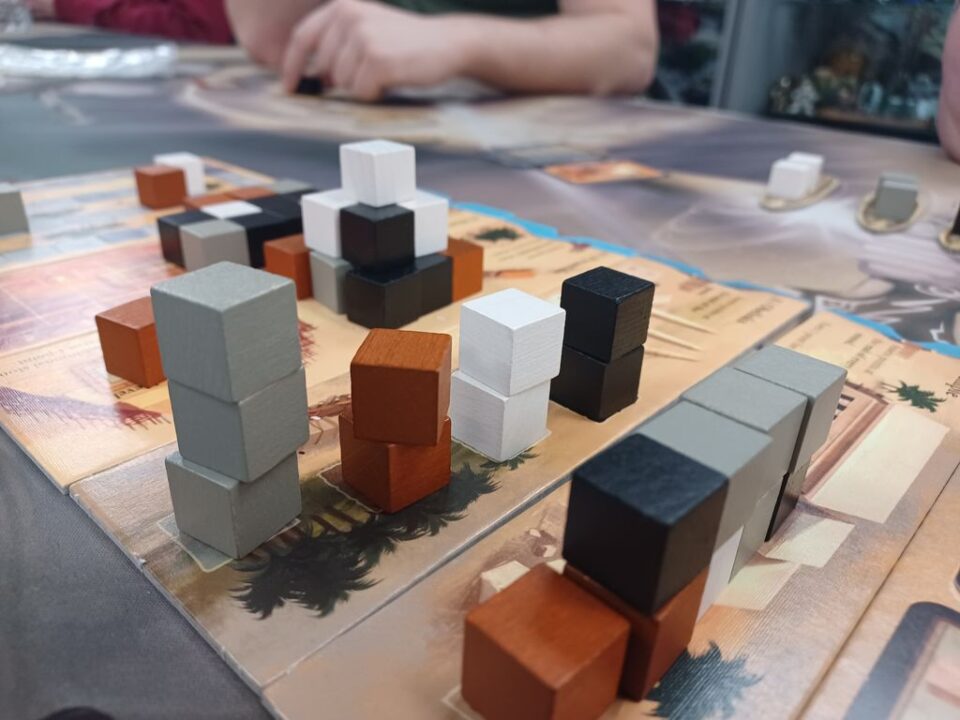
Building Blocks of Social Strategy
In my plays for the Imhotep Review, it’s the moments of player interaction that still resonate. Like the time Susan masterfully redirected my cargo ship, laden with stone, to a less than optimal docking station; the groan around the table was almost tangible. Such moves are the essence of Imhotep’s design—a platform where you not only compete for resources but also for opportunities.
Strategic Alliances
Not many games foster fleeting alliances quite like Imhotep. Last session, while normally rivals, Keith and I found ourselves subtly teaming up to block Sarah’s ambitious construction plans. That camaraderie, however, only lasted until our own paths crossed—it’s the nature of the game.
Crafty Competition
The dynamic shifts with each turn, each move a stab at progress while undercutting opponents. Our table buzzes with anticipation and playful banter, testament to Imhotep’s engrossing nature. It’s in those interactions that friendships are tested and hilarious memories made.
Just as a single stone can shift the balance of a ship in Imhotep, we’ll soon see how the game’s simple setup tips the scales towards quick gameplay.
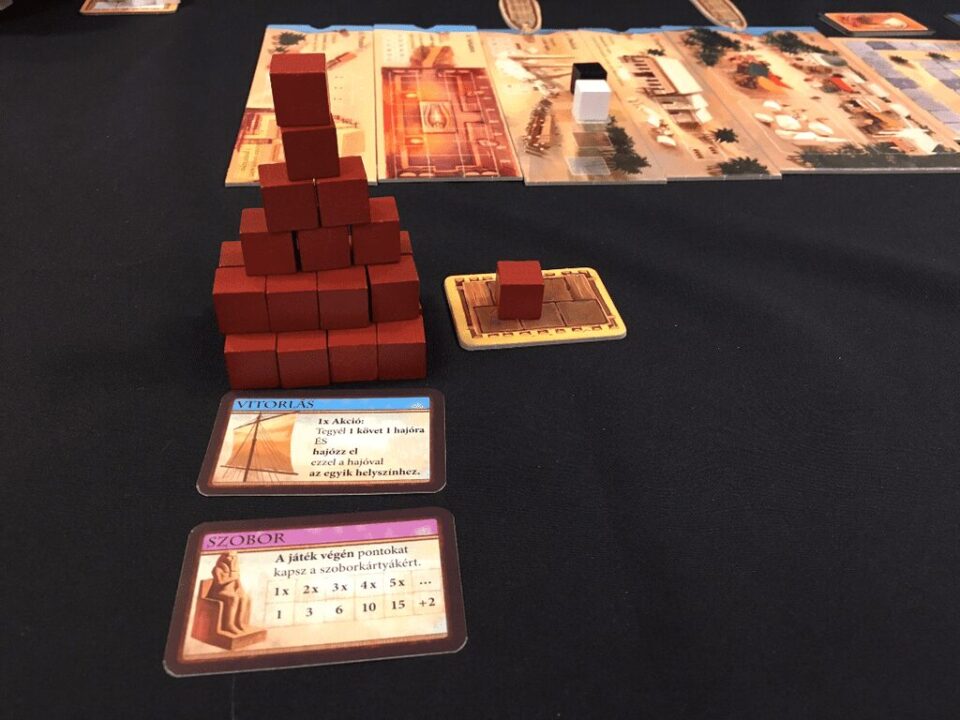
Imhotep: Swift Sailing on the Nile
In my time with board games, ‘Imhotep’ has consistently stood out for its remarkable brevity in setup and pace, which is sometimes as surprising as the desert’s sudden storms. Running through the pre-game preparations during our game nights is often as seamless and satisfying as fitting the final piece into an ancient puzzle. Launching into Action resonates among my circle of friends because the learning curve is smooth yet engaging, quickly transforming board game rookies into enthusiasts hungering for more challenges.
Smooth and Steady Gameplay certainly shines when bringing together a group; ‘Imhotep’s’ mechanics are deceptively simple but masterfully crafted to foster immediate engagement. Thus, sharing this gaming gem up my sleeve always adds up to exciting evenings. Playing Imhotep doesn’t just pass time; it orchestrates it. Therefore, pondering all virtues, recommending Imhotep is not just a nod but a resounding cheer for its sleek design.
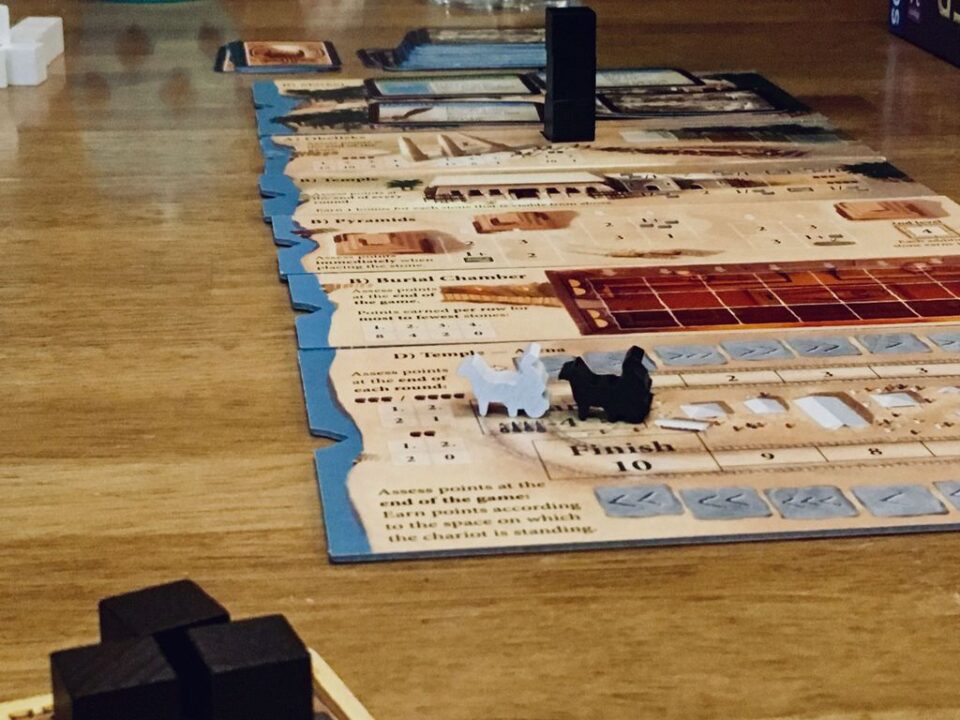
Conclusion
As we draw the curtains on our Imhotep review, it’s clear that this game excels in combining simple setup with deep strategic depth. Each aspect, from resource management strategies to the vibrant player interaction dynamics and the refreshingly quick gameplay, underscores why Imhotep deserves a spot on your gaming shelf. It offers an exhilarating blend of planning, competition, and unpredictability, plus an educational journey into ancient Egypt — sans the need for a history book. Whether it’s the deceiving complexity of gameplay that unfolds from basic actions, or the social hub it creates on game nights, Imhotep stands tall amongst its peers, affirming that it is indeed a game worthy of your time and repeated plays.

